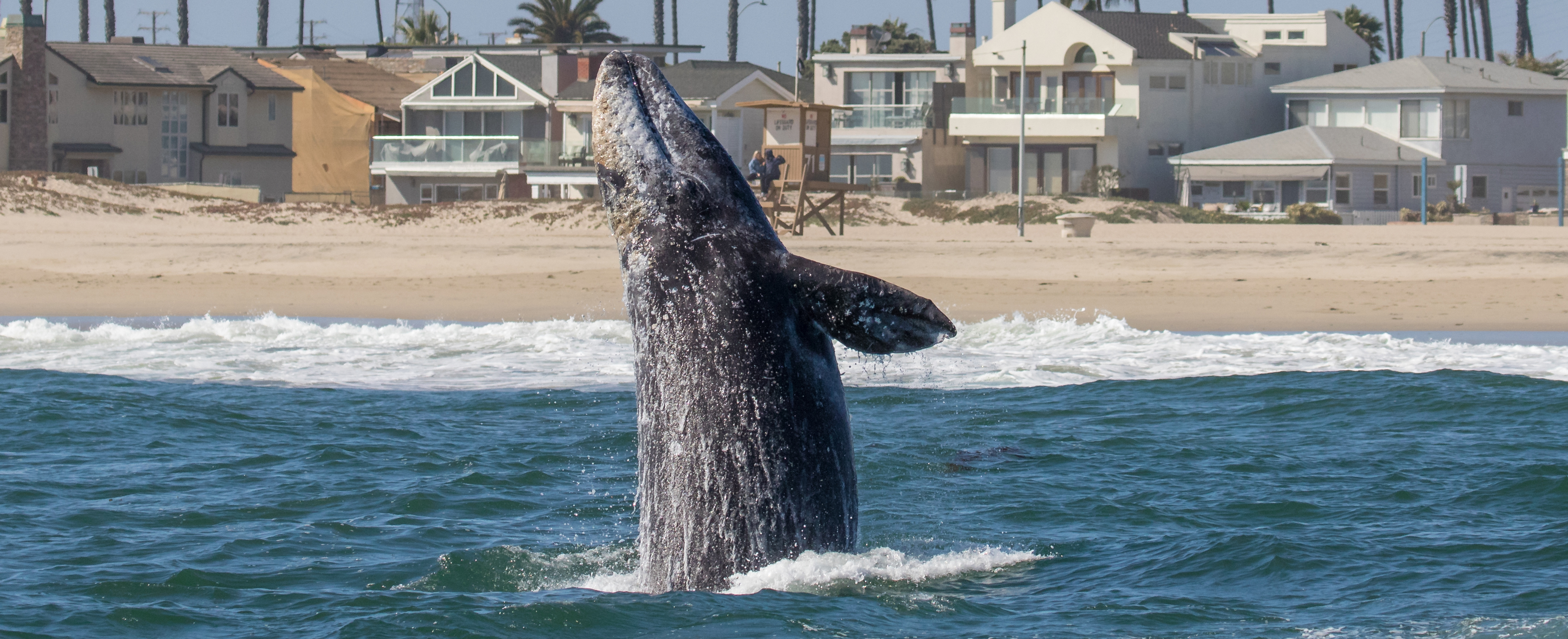GRAY WHALE Watching (Eschrichtius Robustus)

Gray Whales can be credited with launching the whale watching industry as we know it. Whale Watching as an industry came about as a result of the predictability of the gray whale migration off of San Diego in the early 1950’s. The migration begins in December and can last until late May. The first leg of the migration from north to south has Gray Whales traveling to their winter breeding grounds in Baja. This leg of the migration lasts for several months and often the return migration will begin while south-bound Gray Whales are still being viewed. On the return leg, Gray Whales traveling south to north will often have newborn calves and are known to travel very close to shore, making for incredible viewing opportunities. 2011 saw record numbers of Gray Whales and the population is now estimated at over 25,000.
Gray Whales, like their cousins the Humpback Whale, are often are covered in barnacles. Unlike their cousins, Gray Whales have no dorsal fin. Also unlike other whales, Greys feed off the sea floor, filtering mud for small crustaceans and mollusks.
Gray Whales travel in pods from two to 20 and even during the migration these pods remain loosely organized. At 13,000 miles round trip, the Gray Whale migration is the longest of any known animal migration on Earth and is a testament to their tenacity. Gray whales live up to 60 or so years of age.
Gray Whales and Blue Whales are by far the two most common whales viewed on a Newport Landing whale watching cruise. During the migration, up to half a dozen Gray Whales can be viewed on a single cruise. Mothers and their calves offer a special treat and often the newborns are very social and curious about our boats!


